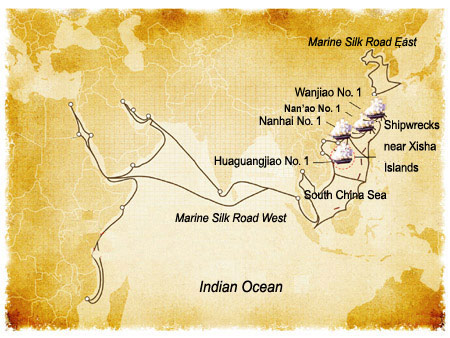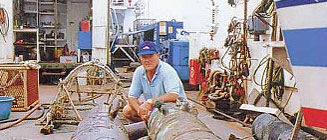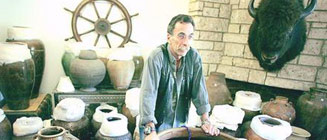Search for ancient treasure ships

|
Editor's Note
You may know the silk road on land, a trade route that got its name from the lucrative Chinese silk trade. But have you ever heard of a silk road on the sea? And the history of the sunken ships and their treasures? |
Sunken Ships
|
 |
In the recent years, several ancient shipwrecks full of porcelain vases, plates, cups and iron pots and copper plates were discovered in the South China Sea and East China Sea. The most important shipwrecks found there are: • Nanhai No. 1 and Huaguangjiao No. 1: Sank some 800 years ago during the Southern Song Dynasty (1127-1279) • Nan'ao No. 1: Previously known as Nahai No. 2, sank some 400 years ago during the Ming Dynasty (1368-1644) • Wanjiao No. 1: Sank some 300 years ago during the Qing Dynasty (1644-1911). |
Treasure Hunters
 |
In May 1985, Mike Hatcher, a controversial British explorer and marine salvor, discovered the wreck of Geldermalsen (or the Nanking cargo) in South China Sea. He brought up an amazing haul of gold and over 150,000 pieces of porcelain. In April, 1986, he took the treasure to Christies in Amsterdam for auction. The Chinese government was shocked but couldn't find any reference to legally bind Hatcher to return the assets to China. >> |
 |
Treasure hunter Luc Heymans found a sunken boat laden with rare ceramics that had sank more than 1,000 years ago. He hid all the excavated treasures in a warehouse in Indonesia, and reported that he expected to auction the treasure. But Indonesian police confiscated his loot until he agreed that Indonesia would receive 50 percent of proceeds from the sale of the treasures. Sadly, Chinese archaeologists could do nothing to regain these Chinese treasures. >> |
|
 |
In August 2003, the Guernsey auction house decided to suspend an auction after receiving letters questioning whether the deep sea explorer Phil Greco had obtained the necessary permits from the Philippine National Museum in Manila. Although Greco claimed that all his collections were discovered from the coast of the Philippines, obviously, most of them were from the Chinese seaboard. >> |
Treasures Undersea
|
 |
 |
| Huaguangjiao No. 1 | |
|
 |
 |
| Nan'ao No. 1 | Wanjiao No. 1 |
Marine Silk Road
 |
The marine silk road, like its overland counterpart, had its origins during the Han Dynasty (202 BC-220 AD). The maritime routes opened by Emperor Han Wudi (reigned 140-87 BC) provided access to the Roman Empire via India, marking the first oceanic route as well as the earliest marine trading route in the world. This enabled China to actively seek out overseas markets and establish foreign trade relations, and laid the foundation for the development of the maritime Silk Road. >> |
Share your treasure hunting stories!
 0
0 





Go to Forum >>0 Comments